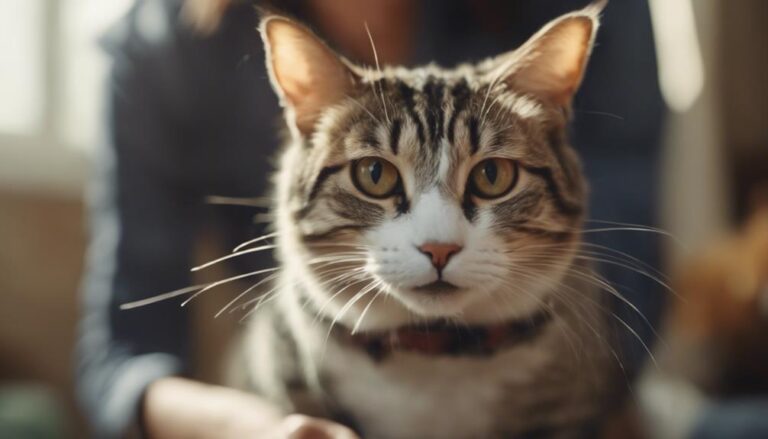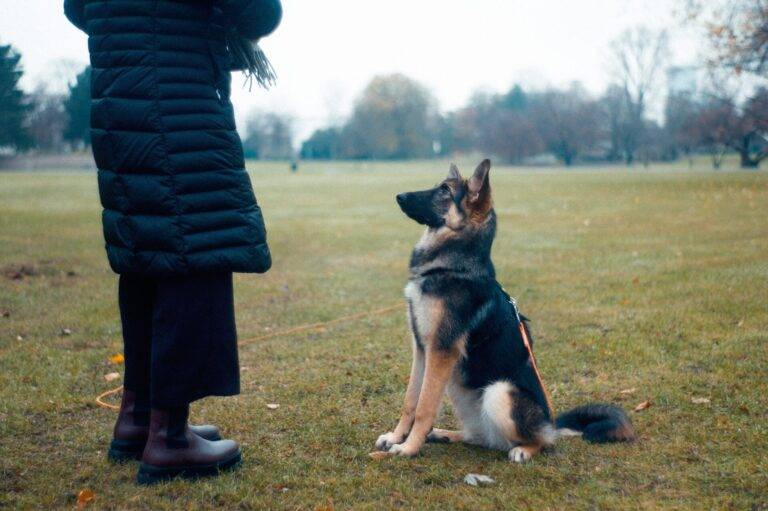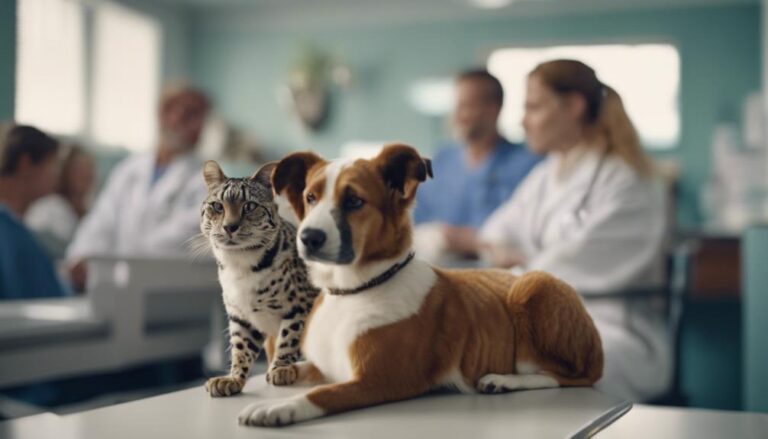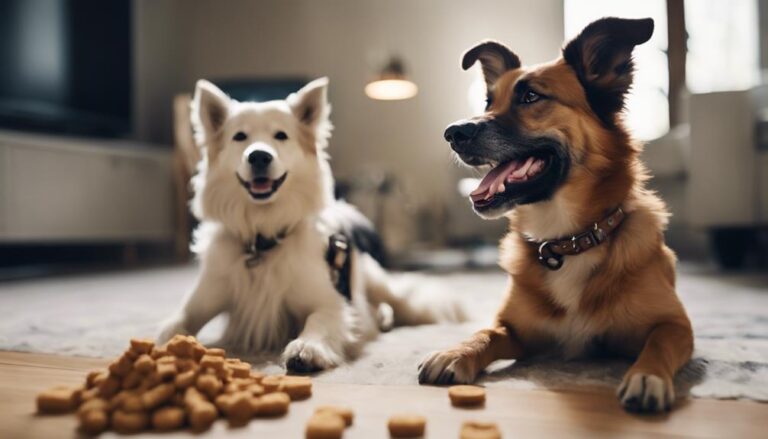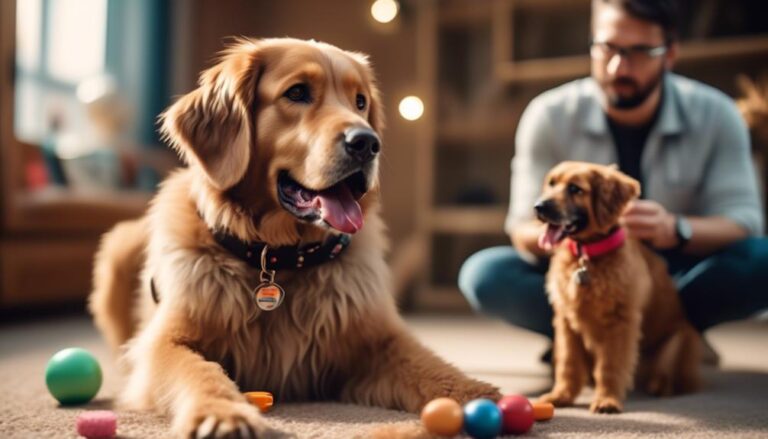How Do I Potty Train My Puppy Master Guide
How Do I Potty Train My Puppy? Are you tired of constantly cleaning up after your puppy’s accidents? Potty training can seem like a daunting task, but fear not, because there is a solution. By following a few simple steps, you can teach your puppy to do their business in the right place. In this discussion, we will explore the basics of potty training, establishing a consistent routine, supervising and confining your puppy, using positive reinforcement, dealing with accidents, and advanced techniques for troubleshooting. So, if you’re ready to say goodbye to those messy surprises and hello to a well-trained pup, let’s get started!
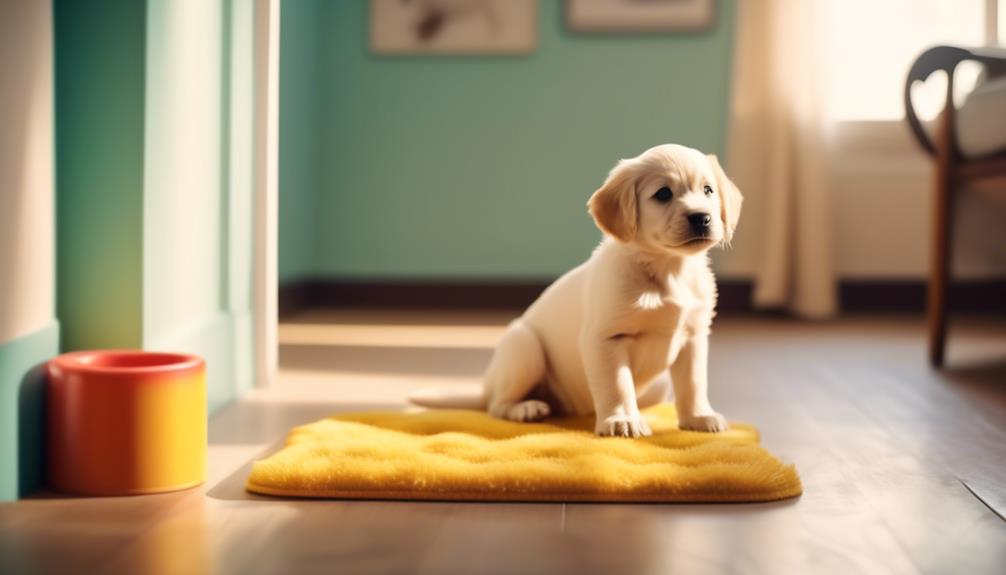
Understanding the Basics
To understand the basics of potty training, it is crucial to recognize that crates play a vital role in housetraining puppies as they instinctively seek a secure den-like space. Crates provide a safe and comfortable environment where your puppy can rest and relax, but they also serve as an important tool in teaching your puppy to hold their bladder and bowels. When properly introduced and used, crates can help your puppy learn to control their urges and develop good habits.
As part of the potty training journey, it is important to establish a routine and schedule for your puppy. Puppies have small bladders and need frequent opportunities to eliminate them, so it is recommended to take them outside every time they wake up, after meals, and after playtime. By consistently taking your puppy outside at these key moments, you are helping them learn that going outside is the appropriate place to relieve themselves.
Observation and supervision are also crucial during the potty training process. By closely observing your puppy, you can learn to recognize their individual signals and rhythms for potty training. This will enable you to anticipate when they need to go outside and help them get to the designated potty area in time.
In addition to using crates, establishing a consistent routine, closely observing your puppy, controlling their diet, using praise, and avoiding punishment are essential aspects of successful potty training. A well-balanced diet can help regulate your puppy’s digestive system, making it easier for them to hold their bladder and bowels. Positive reinforcement, such as praise and rewards, will motivate your puppy to learn and repeat the desired behavior of going outside. Lastly, it is important to avoid punishment or scolding your puppy when accidents happen, as this can create anxiety and hinder the potty training process.
Creating a Consistent Routine
Establishing a consistent routine is a key element in successfully potty training your puppy. By implementing a regular schedule for feeding, playtime, and potty breaks, you can help your puppy understand when it’s time to eliminate. Taking your puppy outside to the same spot for every potty break reinforces the routine and reduces the chance of accidents inside the house.
To begin, it’s important to establish a consistent puppy feeding schedule. By feeding your puppy at the same time every day, you can regulate their digestion and predict when they will need to be eliminated. This will enable you to plan potty breaks accordingly. Additionally, feeding your puppy in the same area using the same bowls each time will create a familiar environment that reinforces the routine.
Incorporating regular potty breaks into your puppy’s daily schedule is crucial. Take your puppy outside to their designated potty spot every few hours, as well as after meals and naps. This consistency in timing will help your puppy develop a predictable elimination pattern. Remember to use verbal cues, such as “go potty,” and offer positive reinforcement when your puppy successfully eliminates in the designated spot. This will reinforce good behavior and motivate them to repeat it in the future.
Monitoring your puppy’s behavior and schedule closely is essential in potty training. By observing patterns, you can identify when your puppy is most likely to need a potty break and adjust the routine accordingly. Be flexible and adaptable in making changes to the schedule as needed to ensure your puppy’s success.
Supervising and Confining
Continuing your puppy’s potty training journey, a crucial aspect is supervising and confining them to ensure they learn appropriate elimination behavior. It is essential to make sure you watch your puppy closely during the early stages of potty training. By doing so, you can catch any signs that they need to go and promptly take them outside. Puppies have small bladders and need to be eliminated frequently, so it is important to be vigilant.
One effective method is to crate-train your puppy. Crates provide a safe and comfortable space for your puppy when you cannot directly supervise them. Dogs have a natural instinct to keep their sleeping area clean, so confining them to their crate helps develop their understanding of holding their bladder. However, it is crucial to remember that crate training should not be used as a punishment for your dog. It should be a positive and secure space for them.
When taking your dog outside, choose a designated potty spot in your yard. Consistency is key, as it helps your puppy associate that spot with eliminating. Use a cue word or phrase, such as “go potty,” to reinforce the behavior you want them to display. Reward your puppy with praise and treats immediately after they are eliminated in the appropriate spot. This positive reinforcement reinforces their understanding of what you expect from them.
Using Positive Reinforcement
Using positive reinforcement is an effective and rewarding method for potty training your puppy. By consistently rewarding your puppy with treats, praise, or playtime when they are in the appropriate spot, you can create a positive association with going potty outside. This positive association encourages your puppy to repeat the behavior, making the potty training process more successful.
Verbal praise and enthusiastic encouragement are key components of positive reinforcement. When your puppy eliminates in the right spot, use a happy tone of voice to praise them and offer words of encouragement. Let them know that they have done a good job. This positive reinforcement helps your puppy understand that going potty outside is a desirable behavior.
To effectively potty train your puppy using positive reinforcement, it is important to be patient and consistent. Remember that puppies are still learning and developing good habits. It may take time for them to fully understand what is expected of them. By consistently rewarding them for eliminating in the appropriate spot, you are reinforcing the behavior and helping them learn.
When using positive reinforcement, it is essential to choose rewards that your puppy finds motivating. This could be small treats, a favorite toy, or even extra playtime. By using rewards that your puppy enjoys, you are increasing the likelihood of them repeating the desired behavior.
Dealing With Accidents
Accidents are an inevitable part of the potty training process, but there are effective strategies for dealing with them. When accidents happen, it’s important to take immediate action. Without making a big deal out of it, take your puppy outside to their designated bathroom spot. This will help them associate going outside with the act of relieving themselves.
It’s crucial not to punish your puppy for eliminating in the house. Punishment can lead to fear and confusion, hindering the potty training process. Instead, focus on positive reinforcement when your puppy successfully goes outside. Use a verbal cue, such as “go potty” or “do your business,” to help associate the command with the action.
After an accident occurs, it’s important to thoroughly clean the soiled area. This will help remove the smell, as dogs are more likely to eliminate in areas that smell like urine or feces. Use an enzymatic cleaner specifically designed for pet accidents to effectively eliminate odors.
To minimize accidents and confusion, use supervision and confinement procedures. Keep a close eye on your puppy when they are indoors, and consider using pads or paper in a designated area as an alternative potty spot. When accidents happen, simply turn around and go back outside to the designated area. Consistency is key to successfully potty training your puppy.
Advanced Techniques and Troubleshooting
Now that you have established a foundation for potty training your puppy and have learned effective strategies for dealing with accidents, it’s time to explore advanced techniques and troubleshooting to further enhance the training process.
One advanced technique you can use is addressing separation-related behavior and anxiety during potty training. Some puppies may become anxious when left alone, leading to accidents. To reduce the likelihood of this happening, gradually increase the time you spend away from your puppy, starting with short periods and gradually extending them. This will help your puppy develop confidence and independence.
Verbal cues and rewards are also essential tools for reinforcing potty training. Teach your puppy a specific command, such as “go potty,” and use it consistently when you take them outside. When your puppy successfully eliminates, praise and reward them immediately. This will help them associate the command with the action and reinforce the desired behavior.
Understanding and dealing with the signs that your puppy needs to toilet is crucial. Keep an eye out for behaviors like sniffing, circling, or whining, as these are often indicators that your puppy needs a potty break. By recognizing these signs, you can promptly take them to the designated potty area, reducing the chance of accidents.
Managing and supervising your puppy during the potty training process is vital. Keep your puppy in a dog crate or a small, confined area when you can’t actively supervise them. Dogs have a natural aversion to soiling their sleeping area, making a crate an effective tool for potty training. Ensure the crate is small enough for your puppy to feel secure but large enough for them to turn around and lie down comfortably. This way, they will be able to hold their bladder and bowels until you let them out for a potty break.
How Do I Potty Train My Puppy Frequently Asked Questions
How Do You Potty Train a Puppy Easily?
To potty train your puppy easily, start by crate training them, using positive reinforcement, and establishing a routine. Use puppy pads indoors and create an outdoor potty area. Leash them for potty breaks, clean up accidents properly, and avoid punishment. Seek professional help if needed.
How Long Does It Take to Potty Train a Puppy?
It typically takes several weeks to fully potty train a puppy. Consistency is key in avoiding common mistakes. Effective crate training, positive reinforcement, and a potty training schedule help establish good habits. Accidents happen, so be patient and address fear or anxiety. Transition from potty pads to outdoor training gradually. Small breed puppies may need extra attention.
How Do You Stop a Dog From Peeing and Pooping in the House?
To stop a dog from peeing and pooping in the house, start by providing indoor potty options like puppy pads. Consistency in training, positive reinforcement techniques, and establishing a routine are key. Manage accidents calmly, use crate training effectively, address any medical issues, and clean up accidents properly. If dealing with separation anxiety, seek professional help if needed.
What Age Should a Puppy Be Toilet Trained?
Toilet training a puppy typically starts around 12-16 weeks old when they have better bladder control. It’s important to be patient, observant, and consistent while using positive reinforcement and avoiding common mistakes.
Conclusion
In conclusion, potty training your puppy requires consistency, patience, and a dedicated routine. By creating a den-like space with a crate and establishing a consistent schedule for potty breaks, you can help your puppy learn to eliminate outside. Close observation, positive reinforcement, and controlling their diet are also important factors in successful potty training. Remember to be patient, as accidents may happen along the way. With the right approach, your puppy will learn to go in the right place and become a well-trained companion.



